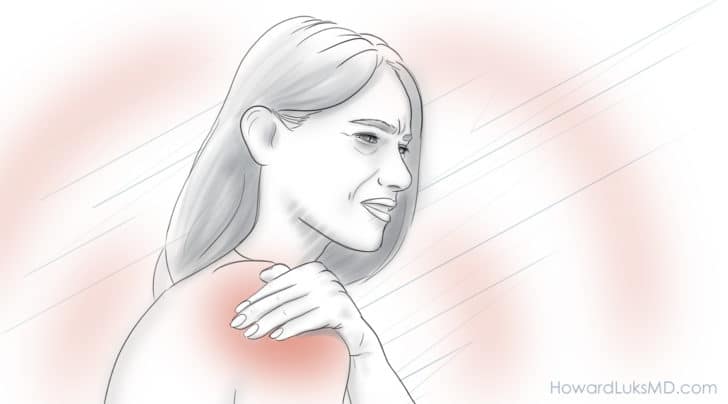
You woke up one morning and your shoulder pain is off the charts. This is the most severe shoulder pain you’ve ever had. Most people with severe shoulder pain didn’t injure themselves. The most common causes of severe shoulder pain in adults do not require an injury. Sure, a few of you have shoulder pain following a fall. But the majority of people with severe shoulder pain simply woke up with it.
With severe shoulder pain, many of you can’t sleep at night, yet others only have pain when they exercise. Many people who call our office do not think it is their shoulder, to begin with, this is because many shoulder issues hurt more on the side of the upper arm as opposed to up around the shoulder. They will ask why their arm hurts so much.
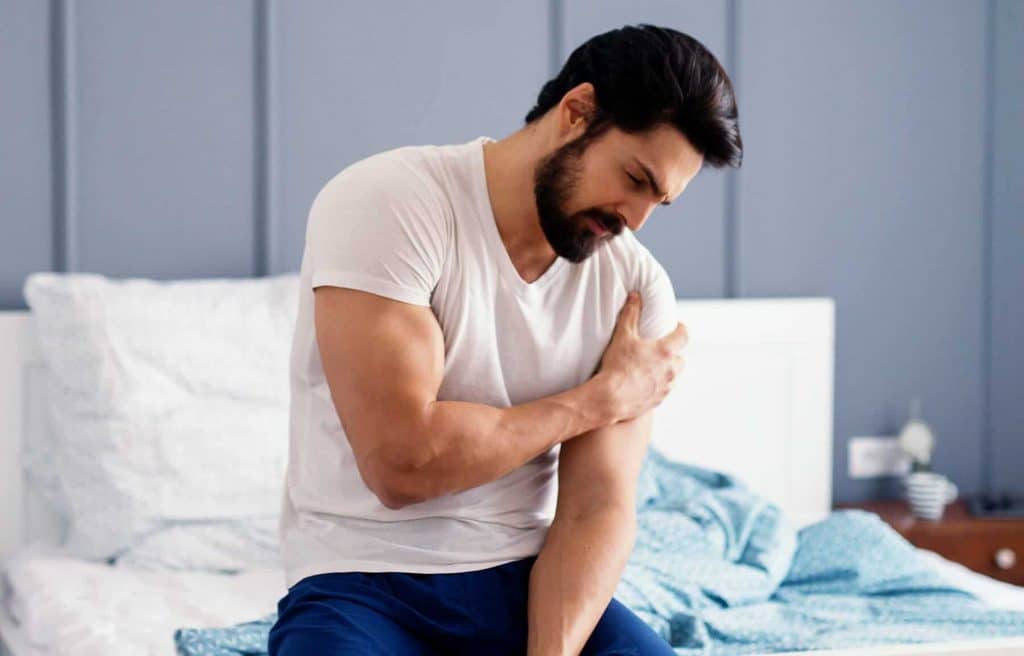
Whether you have severe shoulder pain, or severe pain on the outer part of your arm, this post is for you.
There are many structures in the shoulder that can become upset or inflamed and lead to shoulder pain. The most common causes of pain can affect the nerves, tendons, ligaments, and bursa.
The 5 most common causes of very severe shoulder pain include:
- Parsonage Turner Syndrome
- Frozen Shoulder
- Calcific Tendonitis
- Rotator cuff tears
- Rotator Cuff Tendinosis and bursitis
The cause of your shoulder pain has a lot to do with what age group you are in. Different problems arise in the shoulder and cause pain as we age. In each grouping, I provide links that go into more detail on the specific diagnosis which is mentioned.
Causes of Severe Shoulder Pain
First, a broader overview of shoulder pain in various age groups.
Age 14-20: In general, this age group suffers from traumatic shoulder injuries.
- In the pediatric population most of you have shoulder pain due to a traumatic event, a fall, a tackle or a tumble off your new hoverboard. Shoulder dislocations are one of the leading causes of shoulder pain in this age group.
- Labral tears are a very common source of shoulder pain in the pediatric athlete. The labrum is a cartilage disk that helps maintain stability of the shoulder. Pitchers and overhead athletes can develop a labral tear from repetitive stress. Football, soccer and other contact sports can produce a dislocation which leads to a different type of labral tear.
- Stress fractures arise in this age group because their bones might still be growing. The “growth plate” will start to fail with the chronic repetitive stress of pitching in excess.
Age 20-35: This age group also tends to suffer from trauma-related injuries.
- Labral tears are still very high on the list of possible causes of shoulder pain, particularly if you are under 30.
- The AC Joint: Especially in the heavy weight lifter and football players the AC Joint — or that little bump above your shoulder can start to wear out from the constant weight training. A weight lifters shoulder will present in this age group and can be very painful Following a severe fall you might also suffer an AC Separation where the bump on top of the shoulder becomes much more prominent.
- Rotator Cuff Tendonitis: This is the first group where the rotator cuff can start to become a cause of shoulder pain. In these instances, you were likely working out heavily and now the front or side of your shoulder is very sore with minimal activity. It is very easy to exceed what the rotator cuff is capable of doing—unless it is trained. If you exercise the larger muscles around the shoulder and do not pay attention to exercising the rotator cuff the the cuff might simply remind you by causing a deep dull ache on the side of the shoulder for a few weeks.
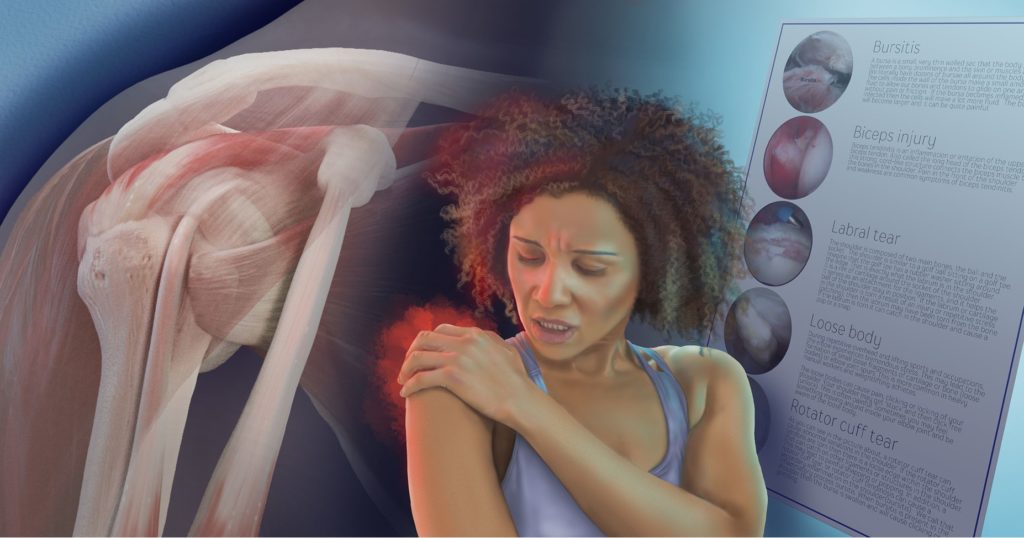
Age 35 and above: This is the age group where the most painful shoulder conditions start to emerge. Again, the most common causes of severe shoulder pain in this age group often do not involve an injury.
Parsonage-Turner Syndrome
Parsonage-Turner Syndrome(PTS) or Brachial Neuritis. People with PTS are not hard to find in the office. They are utterly miserable. The pain they have can be in the shoulder region or the upper arm. Sometimes the pain involves the entire arm. PTS is a post-viral syndrome. That means that you probably had a virus, and a few weeks or months later developed this pain. Some viruses like to affect nerves. The nerves which come from our neck and go into the arm are called the brachial plexus. The virus affects the nerve function… and the first manifestation is severe pain. Very severe pain. In the later stages, the pain will start to diminish, but you will notice that the shoulder or arm is very weak. PTS often resolves… but in a few months.
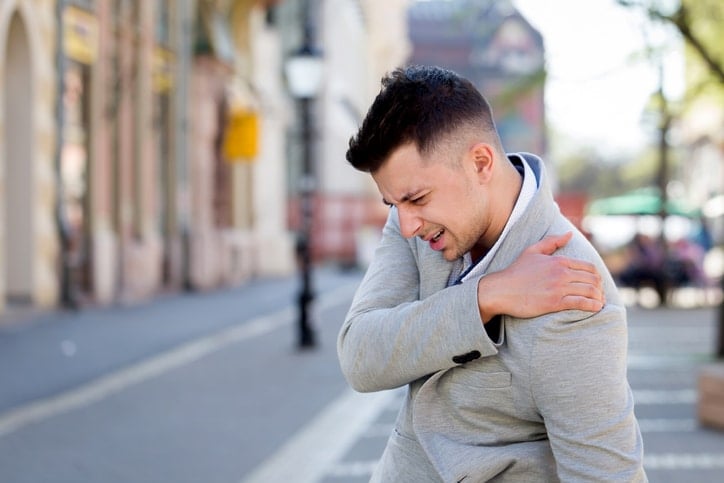
Frozen Shoulder
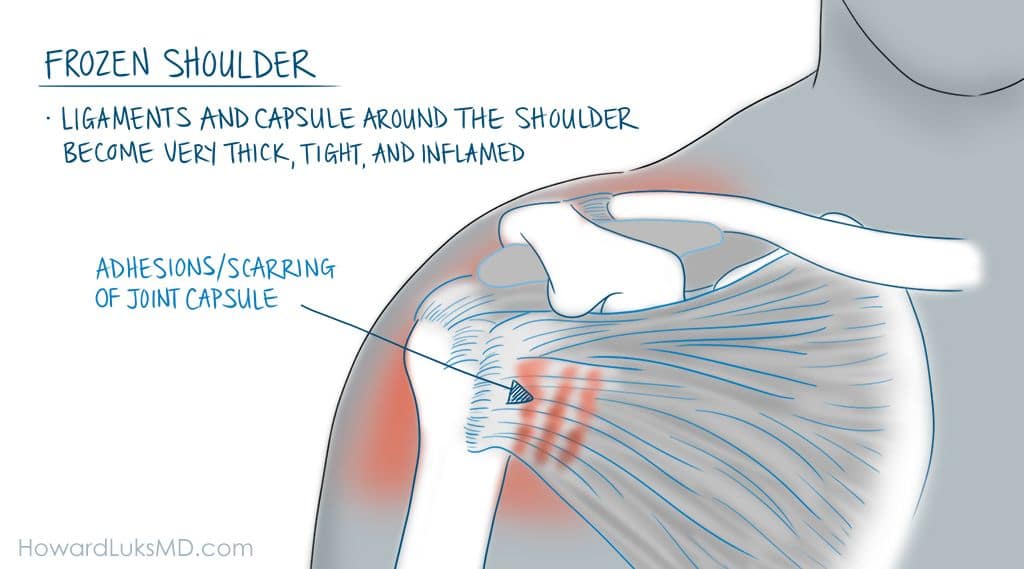
Frozen shoulder or adhesive capsulitis. A frozen shoulder is not a challenging diagnosis to make. You present with severe shoulder pain, pain on the outside of the arm, or even in your armpit. When we examine you we find that moving the shoulder in any direction is painful. We also find that your range of motion is limited. In some cases of a frozen shoulder, the motion is severely limited. This post goes into far more detail about how to diagnose and treat a frozen shoulder.
Calcific Tendonitis
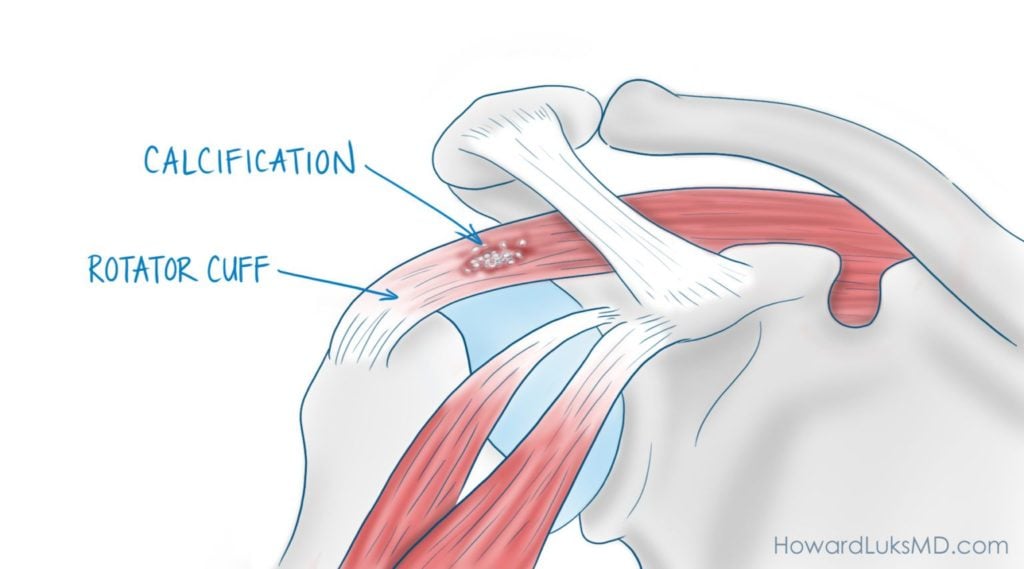
Calcific tendonitis also causes very severe shoulder pain. In calcific tendonitis, you develop a calcium deposit in the middle of your rotator cuff tendon. When your body is trying to reabsorb or take back the calcium it sets off a series of events which lead to severe pain. The treatment is usually straightforward and doesn’t involve surgery. This post goes into more detail about calcific tendonitis.
Do you have questions regarding an Orthopedic injury or longevity?
Do you want to talk to an expert who can listen to you for 45-60 minutes and explain the options in detail?
Dr. Howard Luks offers remote guidance sessions to review your X-ray or MRI images and explain your options.
Dr. Luks has also received hundreds of requests for educational sessions on the topics discussed in his book, Longevity Simplified.
Rotator Cuff Tears
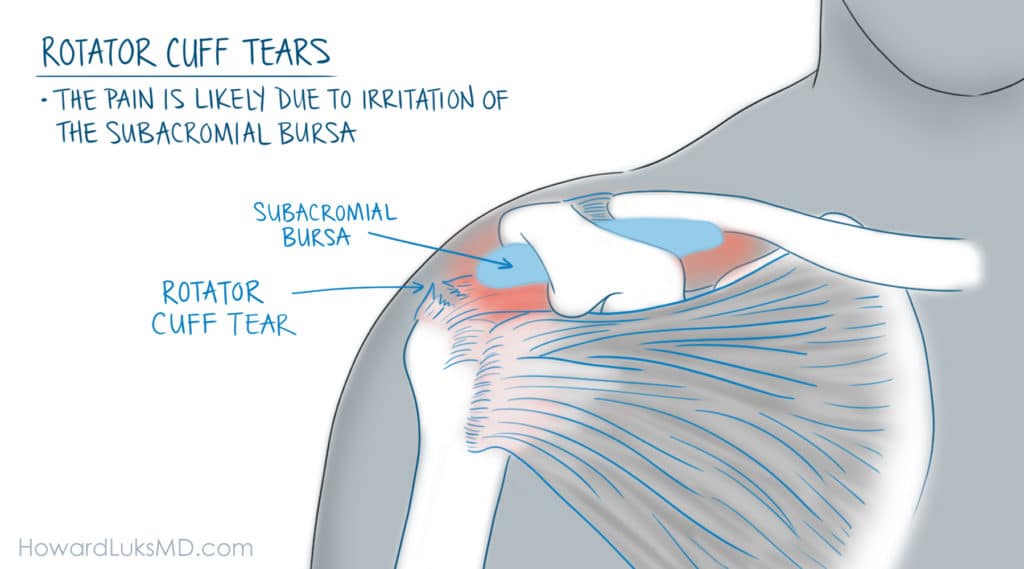
Full-thickness rotator cuff tears can occur following a significant injury, however, the majority of you might have a full tear simply because your tendon wore out. This post goes into detail on the causes of rotator cuff tears. Many rotator cuff tears are small. You can have very severe shoulder pain and have no tear or just a small tear. This is one of those moments when size doesn’t matter. The amount of pain that you have will not correlate with the size of your rotator cuff tear. The treatments of rotator cuff tears vary depending on many factors. This post goes into more detail about the management of rotator cuff tears.
Subacromial bursitis of the shoulder
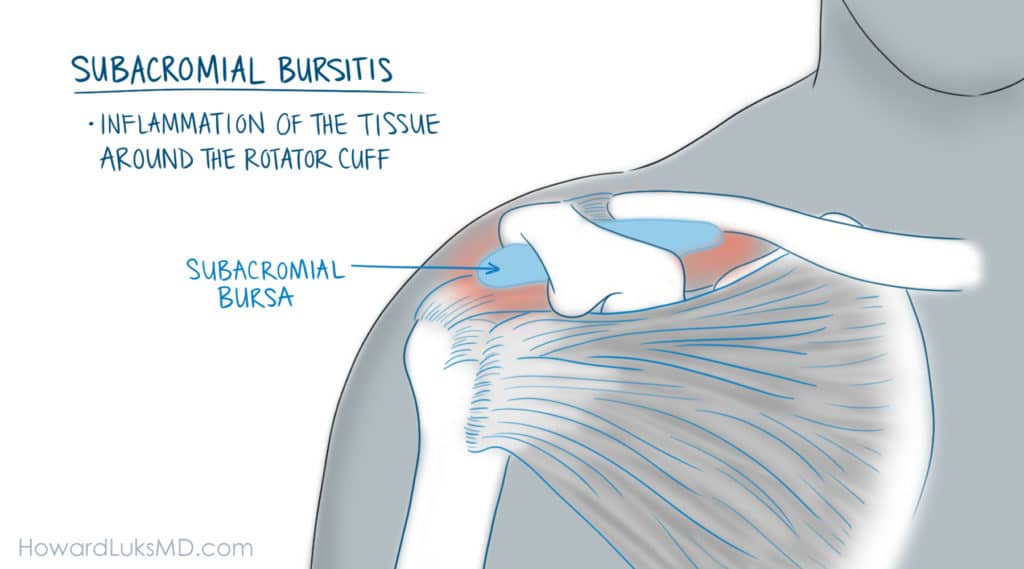
Bursitis of the shoulder can cause very severe pain on the side of the shoulder or the upper arm. Bursitis does not require trauma or injury to occur, but it might follow a long day painting a room or shoveling a driveway. The pain is usually located on the side of the arm and like the other conditions mentioned it can make sleeping very challenging. Many people with bursitis will respond to heating pads, NSAIDs, and cortisone injections.

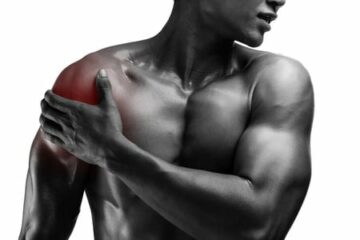
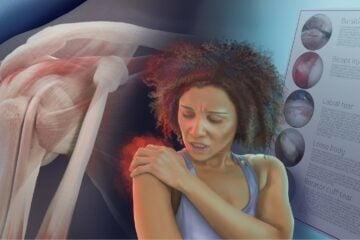










Afton Jackson
Thank you so much for talking about how stress can be a big contributing factor to things like shoulder pain. This makes a lot of sense for someone of my age that would usually be physically fit. However, since that aching hasn’t gotten any better, I’ll find a way to destress and visit a shoulder pain expert immediately.